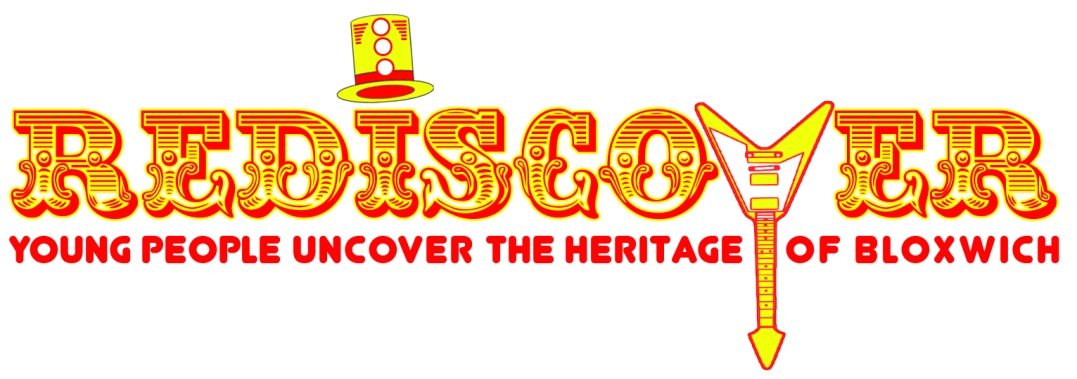Pubs
Bloxwich famously has lots of pubs. It probably had the most in the whole borough at one point – 26 pubs within a six mile radius of Brownhills.

The Turf Tavern, The Thatched House Tavern, The George Inn, The Royal Exchange, The Wheat Sheaf Inn, The Stag Inn
Some say it’s due to all the mining and metal work that went on in these parts. Thirsty work. But mind you don’t stay too long!
The Bull’s Head Pub
The present Bull’s Head Inn in Park Road was built about 1938. Unfortunately, it is now dilapidated with a fallen-in roof, but it links well with a local story about Wishing Tree associated with this pub. The pub’s name derives from the coat of arms of John Skeffington, a 16th century Bloxwich landowner. A Tudor pub of the same name was once here, latterly with a Victorian façade added. The ‘Amicable Society’ met there from 1785. The original inn had ancient oak beams, an ingle nook and an 18th century fireplace.
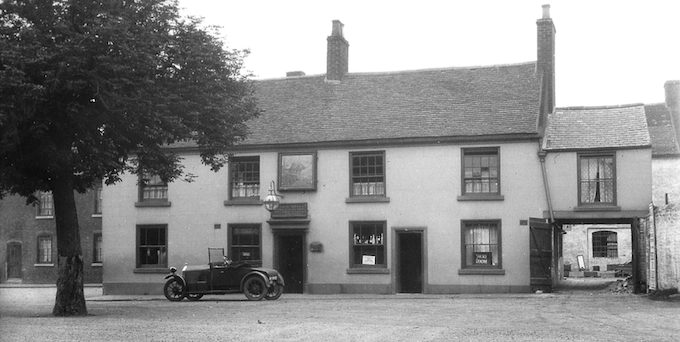
The Bulls Head and Wishing Tree

Elliott by the Bulls Head Pub 2016
The Turf Tavern
This pub hasn’t changed significantly since the present owner’s great grandfather purchased it in 1879. The family are descendants of Samuel Wilks. The Turf has passed down through generations of the Wilkes family. The family were locksmiths, and in the early 1900’s there was a working lock factory at the back of the pub employing up to thirty people. The present owner is Doris Hiscott-Wilkes who has maintained The Turf Tavern’s fine traditions and excellent beer to the present day. Her daughter Zena is manager.
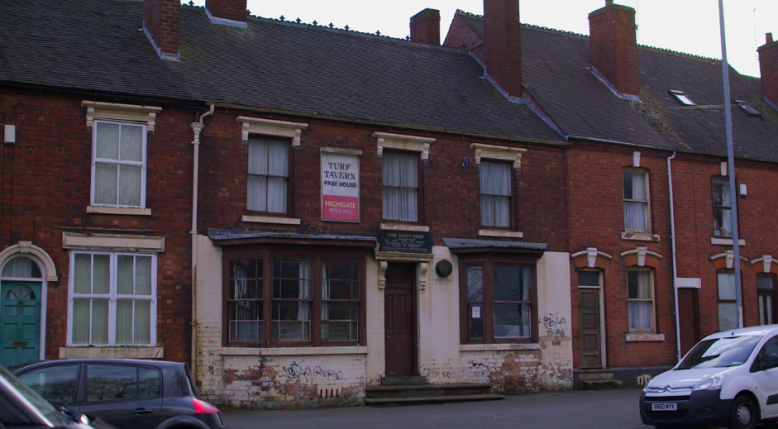
The Turf Tavern 2016
The Spotted Cow
Has been a pub from at least 1851. It was owned in the late 19th century by William Roberts, a prominent Brownhills citizen and businessman, proprietor of the Station Brewery in Brownhills. He also owned the Spring Cottage.
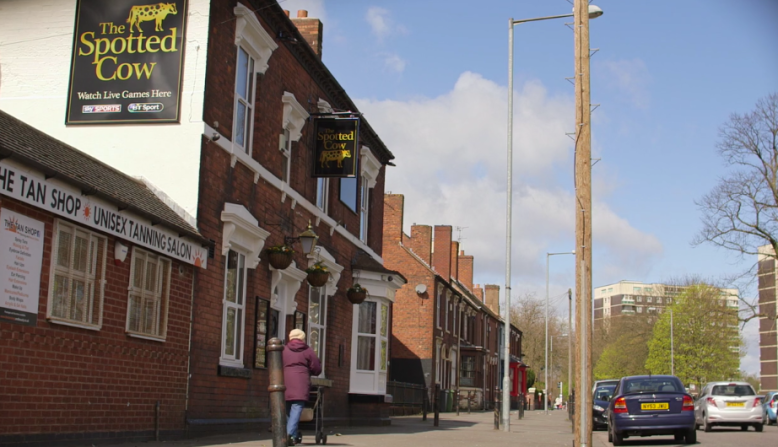
The Spotted Cow 2016
The Spring Cottage
The present building was built about 1901. Interesting features of this pub, now sadly removed, were two engraved glass windows, which had an old 2-2-2 steam locomotive on them with the words ‘Trade Mark’, signifying its one time ownership by Roberts’ Station Brewery, owned by William Roberts, a prominent Brownhills citizen and businessman.
Strange noises have apparently been heard in this pub at night and some of the regulars believe it to be haunted. A survey in the 1920s showed it to have a bar, small outdoor and smoke room with a stable at the back, with trade at the time being about two barrels a week.
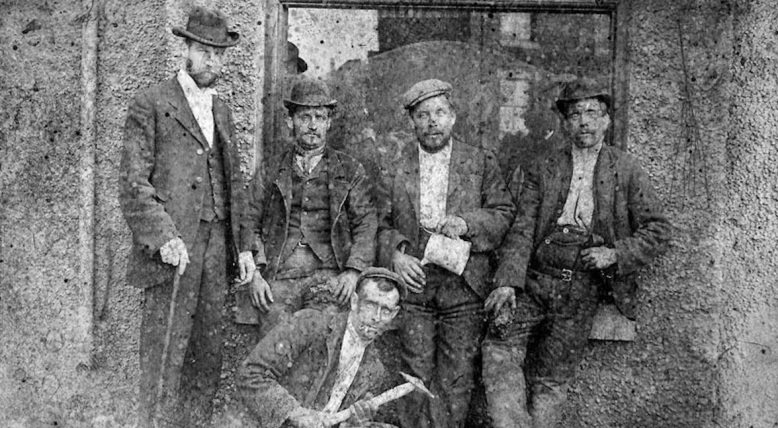
Bloxwich miners drinking at the Spring Cottage c1890s
The Romping Cat
This pub was originally called the Sandbank Tavern and was first licensed in 1900 by Wolverhampton & Dudley Breweries. In March 1957 it was renamed The Romping Cat to comply with the local tradition that there should always be a Bloxwich pub of that name, in memory of Sir Gilbert Wakeringe. Sir Gilbert was Sheriff of the County of Stafford who was knighted by James 1 in 1605; a colourful figure who owned lands in Great Bloxwich and Little Bloxwich. His coat of arms was a blue shield with three golden lions, upright, hence the name. An earlier Sandbank Tavern is supposed to be a chip shop now.
Thatched House Tavern
This pub was built in the late 19th century, and in 1881 the licensee was John Somerfield.
It was once the home of illegal cockfighting, which had been banned in 1849. Local historian, the late E. J. Homeshaw once related the story of a local cockfighter who was door-keeping at the ‘Thatch’ with John Somerfield, and who had the pleasure of refusing admittance to two Bishops because one of them had passed a bad ‘quid’ on him at a previous main (cockfighting match).
Bloxwich Hardware – formerly The George pub
There has been a pub on this site since the 1820’s, when it was known as ‘The George’ and later ‘The Royal George’. The core of the present building is original and dates from that time. Michael Partridge from Cannock owned the property in 1851. By 1880 it was kept by Thomas Parker, a stirrup maker, and in 1904 John Dilks was licensee when it became a Showells house.
It was partly rebuilt in 1936, being then an Ind Coope house, and was taken over by Ansells in 1960. In the early 2000’s the pub was renamed ‘George’s’ and given a more modern image, then later was renamed The George and given a makeover, becoming popular on St George’s Day.
In 2011-12 the pub closed and was eventually taken over by Bloxwich Hardware and sympathetically converted into their new store, opening in 2013. Later, a model shop took over part of the building.

Ben outside Bloxwich Hardware 2016, formerly the George Inn

George Inn Public House and High Street 1900s
The Blue Pig
Bloxwich Library (built 1960), stands in Elmore Row, partly on the site of The Blue Pig, a home-brew alehouse which was there from at least 1834, when the pub faced Chapel Green, known as Elmore Green by 1841. Two houses next door bear signs commemorating the Blue Pig, as they are also partly on the site.
